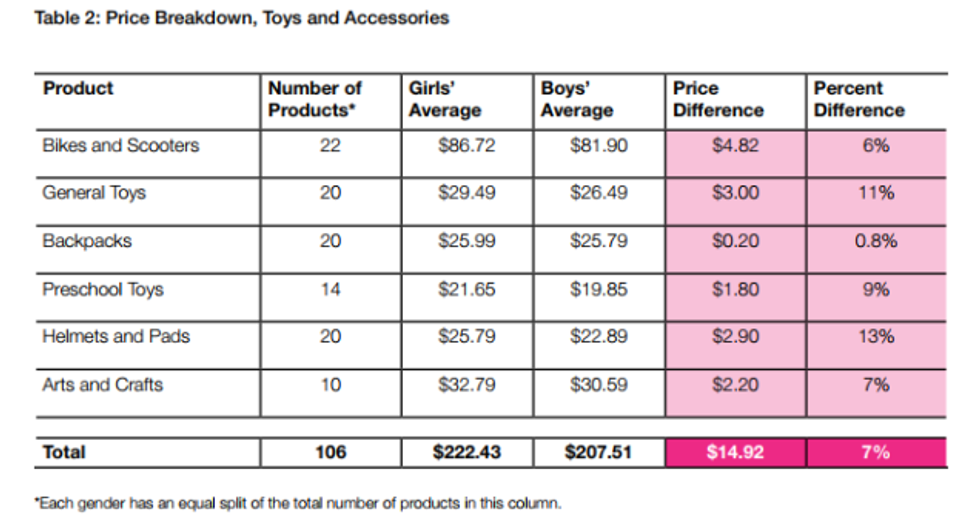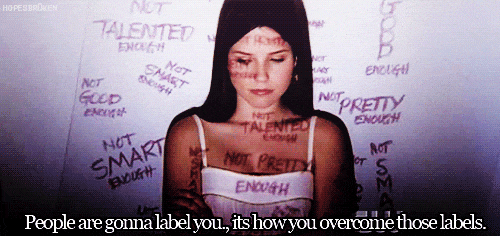Even in the 21st century, gender inequality continues to persist in our society. From the pay gap to discrimination in sports, women are no strangers to being treated differently -- and not in a good way. We are all well-aware of many sexist injustices, but there is another lesser-known disparity to add to the pile: gendered pricing.
Between cosmetics and tampons (not the mention the absurd luxury tax on tampons), women already spend more than men on health and beauty products. But because of gendered pricing -- the way women's products are priced differently from men's -- women are paying even more. A study by the California Assembly’s in the mid-1990s found that women, on average, spend $1,351 per year in extra costs tacked on solely because of their gender. Upon this discovery, California became the first state to ban gendered pricing with the passage of the Gender Tax Repeal Act of 1995; however, those of us who do not live in California are still forced to deal with the issue.
The current argument is that it is simply costlier to manufacture and market women's goods: That "feminine" floral fragrances are more expensive to produce than scents for men, and the production women's clothes requires a higher degree of sewing finesse. When companies were asked why there was a difference in price, one spokesperson from a deodorant company toldConsumer Reports that the products are “completely different formulations,” with differences in packaging. It didn't seem to matter to them that the brand's deodorant contained the same ingredients and percentages; further research by the University of Central Florida in 2011 found that the only difference between the deodorants was the scent. A quick scan of CVS Pharmacy found that Degree Men Sport Antiperspirant and Deodorant costs $3.79 for 2.7 ounces, while its "feminine" counterpart, Degree MotionSense Antiperspirant and Deodorant costs $5.49 for 2.6 ounces. This common occurrence is a prime example of the marketing mantra "shrink it and pink it," a strategy in which everyday products are produced in various shades of pink and made smaller for women to use; however, this usually means that women end up purchasing smaller amounts of product at a higher price. This method is implemented with products such as razors, earbuds, tool boxes and even pens such as Bic's pink and purple pens "for her" (“I know you’re thinking, ‘It’s about time!’ ” Ellen DeGeneres snarked. “Can you believe this? We’ve been using man pens all these years!”)
Deodorant and pens aside, there are thousands of other items that are sold at a higher cost for women. As Consumer Reports found, manufacturers "across the board" insisted that this is just the way things are, once again claiming that it's more expensive to make products for women. It is an accepted practice at this point. Over the course of their lives, women will pay more for everyday items 42 percent of the time, despite the fact that we make less money than men.
“You’re basically squeezing women and families from both ends of the stick,” Anna Chu, Vice President for Income Security and Education at the National Women’s Law Center said. “You’re squeezing them at their cost of living, and you’re squeezing them at the wage end, too.”
One prime example is clothing. Old Navy came under fire in 2014 when a customer named Renee Posey went to its website and noticed that plus-sized women's jeans cost $12 to $15 more. When she checked the prices for plus-sized men's jeans, she found that the price was the same as with regular-sized jeans.
"I was fine paying the extra money as a plus-sized woman, because, you know, more fabric equals higher cost of manufacture," Posey wrote on a petition on Change.org, which has since drawn 95,545 signatures. "However, selling jeans to larger-sized men at the same cost as they sell to smaller men not only negates the cost of manufacture argument, but indicates that Old Navy is participating in both sexism and sizeism, directed only at women."
According to trade lawyer Michael Cone, the issue begins right when the clothing is imported into the United States. When looking through a list of tariffs, Cone found that tariffs in the United States differed across gender lines. Men's sneakers, for example, were taxed at 8.5 percent while women's sneakers were taxed at ten percent. Not every tax he found was in favor of men, he did find that women were susceptible to higher taxes on good imported into the United States at a higher volume.
Dry cleaners are another place that women routinely pay more for clothes and the same service. In 2009 New York resident Janet Floyd decided to survey dry cleaners after she and her husband brought their nearly identical shirts to be laundered in Chelsea and found that hers cost $1.75 more to be cleaned than her husband's; she found that when it came to laundering, men paid an average of $2.86 per shirt compared to the $4.95 women paid. Even President Obama weighed in on the issue. In 2014, the Washington Post reported that he told a group of women gathered at the White House for a pay equity event, "We'll talk about dry cleaners next, right, because I know that — I don't know why it costs more for Michelle's blouse than my shirt."
But almost nothing elucidates the absurdity of gender pricing as vividly as the cost of children’s toys. An analysis by pricing consultancy Boomerang Commerce found that simply being pink is likely to add to the price of a toy sold by online retailers. The analysis, which looked at products sold by Target, Macy’s, J.C. Penney, Bloomingdales, Amazon and Walmart, found that the average differential for all pink vs. non-pink items was between two percent and 15 percent, depending on the retailer. It is important to mention that While the analysis focused on the color rather than gender-orientation of the items, the two factors are clearly related; the packaging on the majority of the pink toys analyzed show a young girl playing with the item, while the blue toys show a young boy. Even a quick search of Amazon.com can demonstrate the price disparities between toys marketed towards girls and toys marketed towards boys. As of August 28, JOON's Huge Teddy Bear-Blue costs $49.00, while its pink counterpart costs $54.95. Radio Flyer's My First Scooter, Red costs $31.96 while its My First Scooter, Pink costs $35.00. This evidence is more than anecdotal and less than unsurprising: A 2015 study conducted by New York City’s Department of Consumer Affairs found that girl’s toys cost more 55 percent of the time, and that girl’s clothes cost more 26 percent of the time. General toys were found to cost around eleven percent more for girls than boys.
While there still seems to be a long way to go on the path to eradicating the concept of unfair gender pricing, newfound awareness of the issue is a big step along the way. On July 8, Congresswoman Jackie Speier (D-CA) introduced the Pink Tax Repeal Act—a bill that would prohibit companies from charging different prices for similar products or services simply based on the gender of the customer. Consumers Union, the advocacy and policy arm of Consumer Reports, along with the Consumer Federation of America and other organizations supports the legislation. The bill is currently in the process of being considered by a congressional committee. In the meantime, consumers can contribute to the effort by voting with their dollars.
“Fundamentally, I don’t think retailers are going to change their behavior until we change our buying behavior,” said Jenn Steele, the director of product marketing at the consumer data firm Indix. “If the pink is more expensive, don’t buy it. Buy the green! Green is cheap. Awesome.”
Calling-out companies and spreading awareness of specific inequities in pricing (like this French Tumblr account has done) is another prime way to bring attention to inequality and expedite policies to close the pricing gap.
With public support, a future where men and women are treated equally as consumers may not be too far away.
























 sunrise
StableDiffusion
sunrise
StableDiffusion
 bonfire friends
StableDiffusion
bonfire friends
StableDiffusion
 sadness
StableDiffusion
sadness
StableDiffusion

 purple skies
StableDiffusion
purple skies
StableDiffusion

 true love
StableDiffusion
true love
StableDiffusion
 My Cheerleader
StableDiffusion
My Cheerleader
StableDiffusion
 womans transformation to happiness and love
StableDiffusion
womans transformation to happiness and love
StableDiffusion
 future life together of adventures
StableDiffusion
future life together of adventures
StableDiffusion





















